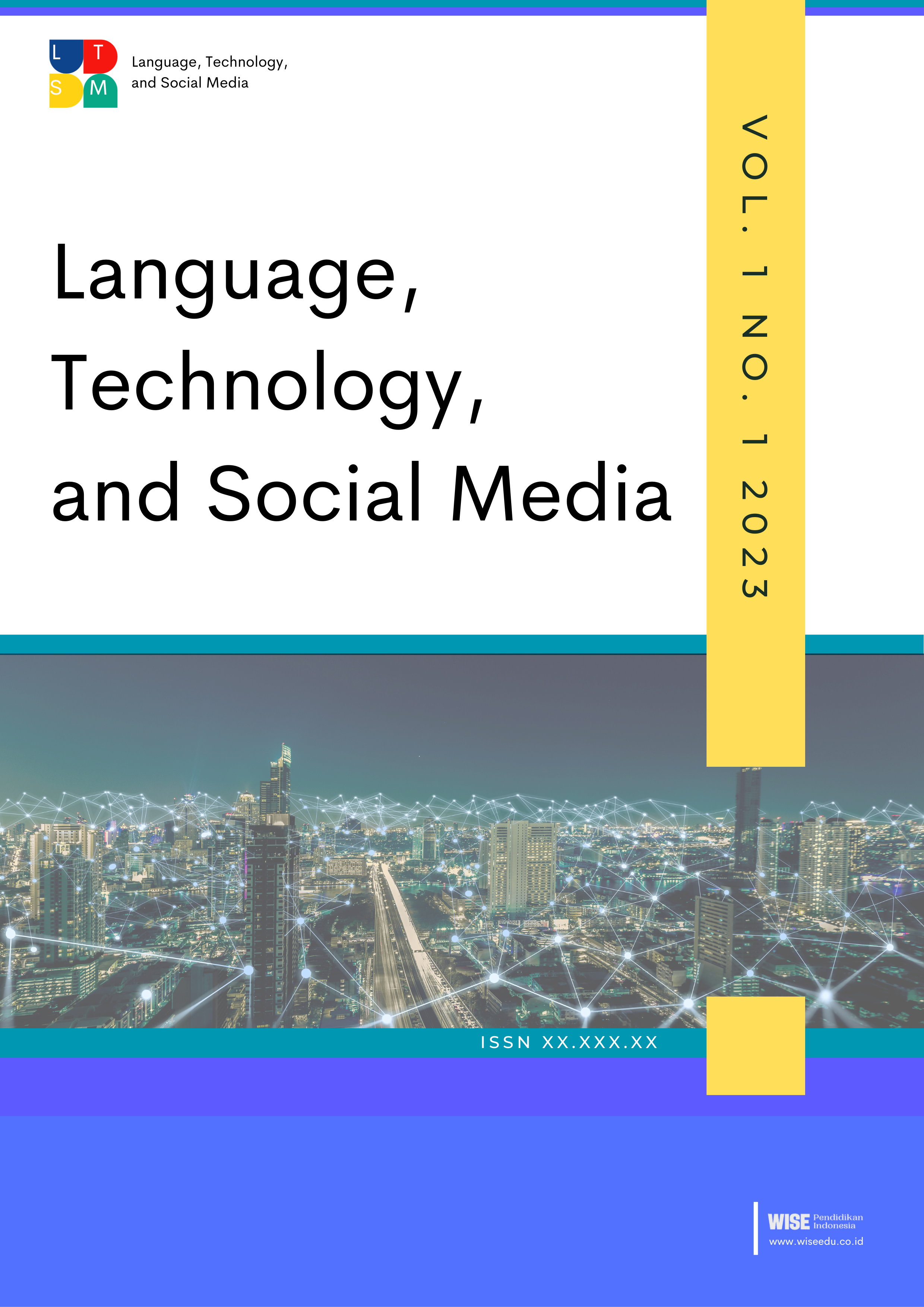How Do Different Generations Communicate on Social Media? A Comparative Analysis of Language Styles, Emoji Usage, and Visual Elements
DOI:
https://doi.org/10.70211/ltsm.v1i2.61Keywords:
Generational Communication, Social Media, Language Styles, Emoji Usage, Visual Communication, Digital MarketingAbstract
This study aims to explore generational differences in language styles on social media, with a focus on levels of formality, emoji usage, and the integration of visual communication elements. A quantitative content analysis was conducted on a sample of 4,000 social media posts collected from Twitter, Facebook, and Instagram. The sample included posts from four generational cohorts: Baby Boomers, Generation X, Millennials, and Generation Z. Each post was analyzed for language structure, the frequency of emoji use, and the presence of visual elements such as memes. Statistical methods, including ANOVA, were employed to identify significant differences across generations. The analysis revealed that Baby Boomers prefer more formal language structures, reflecting their adherence to traditional communication norms. In contrast, Generation Z demonstrates a strong preference for informal language, frequent use of abbreviations, emojis, and memes, illustrating their adaptation to the fast-paced, visually-oriented nature of digital communication. The study concludes that these generational differences are shaped by both cultural background and technological exposure, leading to distinct communication patterns across age groups. This research contributes to the field of digital communication by providing empirical evidence on how generational cohorts interact differently on social media, offering valuable insights for marketers and digital strategists in tailoring their communication strategies.
References
Y. Han, “The Impact of Digital Media on Language Styles and Communication Methods Based on Text, Image, and Video Forms,” Lect. Notes Educ. Psychol. Public Media, vol. 40, no. 1, pp. 211–219, Mar. 2024, doi: 10.54254/2753-7048/40/20240754.
T. Dembe, “The Impact of Social Media on Language Evolution,” Eur. J. Linguist., vol. 3, no. 3, pp. 1–14, Jul. 2024, doi: 10.47941/ejl.2049.
E. Venter, “Bridging the communication gap between Generation Y and the Baby Boomer generation,” Int. J. Adolesc. Youth, vol. 22, no. 4, pp. 497–507, Oct. 2017, doi: 10.1080/02673843.2016.1267022.
H. Downs, “Bridging the Gap: How the Generations Communicate,” Concordia J. Commun. Res., vol. 6, no. 6, 2019, doi: 10.54416/SEZY7453.
S. H. Daulay and H. Berutu, “Exploring Text Messages by Using Emojis on Indonesian Whatsapp,” JALL (Journal Appl. Linguist. Literacy), vol. 7, no. 2, p. 213, Sep. 2023, doi: 10.25157/jall.v7i2.10197.
A. Naci Çoklar and A. Tatli, “Examining the Digital Nativity Levels of Digital Generations: From Generation X to Generation Z,” Shanlax Int. J. Educ., vol. 9, no. 4, pp. 433–434, 2021, doi: 10.34293/education.v9i4.4224.
Y. K. Dwivedi et al., “Setting the future of digital and social media marketing research: Perspectives and research propositions,” Int. J. Inf. Manage., vol. 59, p. 102168, Aug. 2021, doi: 10.1016/j.ijinfomgt.2020.102168.
G. Prawitasari, “The Influence of Generations on Career Choice (Social Cognitive Career Theory Perspective),” Konselor, vol. 7, no. 1, pp. 15–20, 2018, doi: 10.24036/02018718464-0-00.
M. Heitmayer and R. Schimmelpfennig, “Netiquette as Digital Social Norms,” Int. J. Human–Computer Interact., vol. 40, no. 13, pp. 3334–3354, Jul. 2024, doi: 10.1080/10447318.2023.2188534.
A. F. Șchiopu, A.-M. Nica, A. M. Pădurean, and M.-L. Ţală, “GENERATION Z VS. GENERATION Y: DIFFERENT FROM OR SIMILAR? A COMPARISON OF CENTENNIALS AND MILLENNIALS REGARDING THE USE OF SOCIAL MEDIA FOR TRAVEL PURPOSES,” CACTUS, vol. 5, no. 1, Jul. 2023, doi: 10.24818/CTS/5/2023/1.03.
G. Mude and S. Undale, “Social Media Usage,” Int. J. E-bus. Res., vol. 19, no. 1, pp. 1–20, Feb. 2023, doi: 10.4018/IJEBR.317889.
D.-C. Dabija, B. M. Bejan, and N. Tipi, “Generation X versus Millennials communication behaviour on social media when purchasing food versus tourist services,” E+M Ekon. a Manag., vol. 21, no. 1, pp. 191–205, Apr. 2018, doi: 10.15240/tul/001/2018-1-013.
Y. Q. Yusuf, I. A. Fata, and R. Aini, “‘GOTCHUU!’: THE USE OF SLANG IN SOCIAL MEDIA BY GENERATION Z,” Ling. J. Ilmu Bhs. dan Sastra, vol. 17, no. 2, pp. 167–174, Jan. 2023, doi: 10.18860/ling.v17i2.17756.
M. Prada, D. L. Rodrigues, M. V. Garrido, D. Lopes, B. Cavalheiro, and R. Gaspar, “Motives, frequency and attitudes toward emoji and emoticon use,” Telemat. Informatics, vol. 35, no. 7, pp. 1925–1934, Oct. 2018, doi: 10.1016/j.tele.2018.06.005.
T. K. Koch, P. Romero, and C. Stachl, “Age and gender in language, emoji, and emoticon usage in instant messages,” Comput. Human Behav., vol. 126, p. 106990, Jan. 2022, doi: 10.1016/j.chb.2021.106990.
E. Leung, A. I. Lenoir, S. Puntoni, and S. M. J. van Osselaer, “Consumer preference for formal address and informal address from warm brands and competent brands,” J. Consum. Psychol., vol. 33, no. 3, pp. 546–560, Jul. 2023, doi: 10.1002/jcpy.1322.
A. Esposito, “Millennials and Gen Z in Media and Popular Culture,” Millenn. Gen Z Media Pop. Cult., no. March, 2023, [Online]. Available: https://sunderland.idm.oclc.org/books/millennials-gen-z-media-popular-culture/docview/2778024021/se-2?accountid=14154%0Ahttps://librarysearch.sunderland.ac.uk/openurl/44UNOS_INST/44UNOS_INST:44UNOS_INST??url_ver=Z39.88-2004&rft_val_fmt=info:ofi/fmt:kev:mt
U. Udoudom, G. William, A. Igiri, E. Okon, and K. Aruku, “Emojis And Miscommunication in Text-Based Interactions Among Nigerian Youths,” J. Informatics Web Eng., vol. 3, no. 1, pp. 226–240, Feb. 2024, doi: 10.33093/jiwe.2024.3.1.15.
K. N. Salam, A. W. T. F. Singkeruang, M. F. Husni, B. Baharuddin, and D. P. A.R, “Gen-Z Marketing Strategies: Understanding Consumer Preferences and Building Sustainable Relationships,” Golden Ratio Mapp. Idea Lit. Format, vol. 4, no. 1, pp. 53–77, Jan. 2024, doi: 10.52970/grmilf.v4i1.351.
A. Haddock, N. Ward, R. Yu, and N. O’Dea, “Positive Effects of Digital Technology Use by Adolescents: A Scoping Review of the Literature,” Int. J. Environ. Res. Public Health, vol. 19, no. 21, p. 14009, Oct. 2022, doi: 10.3390/ijerph192114009.
O. Kolotouchkina, C. Rangel, and P. N. Gómez, “Digital Media and Younger Audiences,” Media Commun., vol. 11, no. 4, pp. 124–128, Nov. 2023, doi: 10.17645/mac.v11i4.7647.
Downloads
Published
How to Cite
Issue
Section
License
Copyright (c) 2023 Inamul Azad, Sugandha Chhibber, Azra Tajhizi

This work is licensed under a Creative Commons Attribution 4.0 International License.
.gif)









